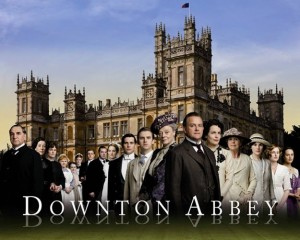This month the Cutty Sark in Greenwich will be opened to the public once more. The 1869 ship has been in dry dock in Greenwich for over 60 years but a disastrous fire in 2007 closed it for repairs and a facelift. Go here and check out amazing pics of the new display and the collection of restored figureheads beneath. We’ve been talking this week about the Titanic and even a merchant ship like the Cutty Sark was a huge structure–the wonderful new display shows the extent of the ship underwater. I wish I could be there on 26th.
I also wanted to follow up on Carolyn’s post yesterday about the TBR pile. I don’t have one. But I do have a TBR collection on my Kindle, as well as many books that I got a page into and archived. I suppose it’s what happens when you lurk mostly around the free or $3.99 or less than pile. (Pile? See, we don’t even have the language for ereading.) I think I’ve bought maybe four or so ebooks that I adore and will read again. But after buying the Kindle and using it almost exclusively for my commute reading and sometimes my bedtime reading since last summer, I’m now yearning for real books. I want that experience of looking over the cover and the back cover blurb and feeling the heft of a real book in my hands. I want to go lurk around the library. I really, really miss the library. I want to go to a bookstore for something other than expensive coffee or birthday cards or a quick fondle of the new releases. (And I received a couple of B&N gift cards as late xmas/birthday presents so soon I’ll be able to do that.)
Yes, I’m feeling nostalgic for recycled tree products. Or am I? I think what I’m missing, still, is my local Borders and the community I experienced there, learning how to write and meeting other writers, signing, talking to strangers about books.
Now as you probably know, the life cycle of mass market paperbacks is incredibly wasteful, books periodically stripped of their covers to be returned and the pages shredded and recycled, while more are shipped to the retailers. If you read a lot, then an ereader makes more sense ecologically, but the manufacture and destruction of an ereader take a lot of energy. The Sierra Club has published an article on the environmental impact of real books vs. ereaders.
On the other hand the sentimentality about “real” books can be pretty silly as Paperwork Blog says:
When you ask people their opinions regarding e-readers vs. real books you find that there is a small section of society that can only be described as the Complete Collection of Literary Dickheads. They will talk about printed novels in an over-romanticised way and for some reason tend to focus on the physical act of turning the pages, the smell of books and how these can’t be replicated by digital versions. That may be true, but turning the pages of a novel isn’t an integral part of the story, it’s just something that you have to do.
Techfanatix has a nice, thoughtful piece about initial suspicion leading to enthusiasm leading to … indifference: “Did I mention that the experience isn’t half as fun as reading a real book?” I’m afraid that I too may be falling out of love with my Kindle.
I like this article from PureVision too:
There are just some things that I would not think twice about doing with a regular paperback that I would never do with a portable electronic device. Reading in the bath is example #1. Leaving it out whenever and wherever is #2. Reading in bed is a lot more uncomfortable and slightly ridiculous with a laptop or iPod. Not to mention some of the other uses that go beyond actually reading. What if I needed to start a fire in a worst-case survival situation and needed paper to get it going? What if I found a rare herb and wanted to preserve it by pressing it between pages of a book? What if I needed a makeshift doorjamb? The list goes on and I’m pretty sure in most of these scenarios, my $10 paperback would be more handy than an expensive e-reader.
So where do you stand on this issue? Are you with the Complete Collection of Literary Dickheads? Passionately involved with your ereader? Somewhere in between? Or looking to start an emergency fire?







